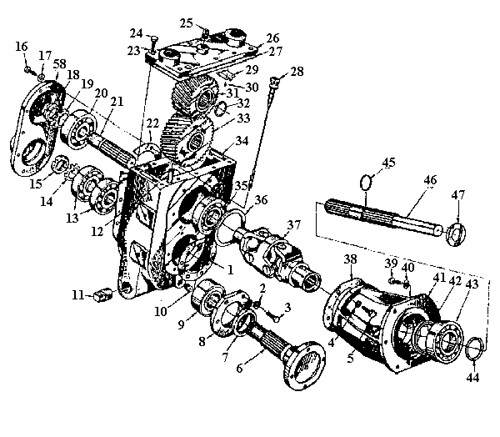Check it out:
Contemporary cultural accounts of masculinity within which masculinity always boils owns to the social, cultural, and political effects of male embodiment and male privilege can only read masculinity as the dominant, power, and active counterpart to feminine passivity and thus white male subjectivities. In Female Masculinity, Judith Halberstam stages multiple interventions into contemporary gender theory by cleaving masculinity and maleness. Female Masculinity first names a deliberate ‘counterfeit’ masculinity that destabilizes the authentication of masculinity through maleness and maleness alone; second it presents an alternative modality that detaches misogyny from maleness and implicit social power from masculinity; third female masculinity demonstrates the nomadic potential of bodies to construct ‘inauthentic’ forms of gender that position themselves in opposition to hegemonic socio-historical gender norms. Desiring the producing and deployment of these alternative forms can foster new social, sexual and political relations.
Halberstam suggests that one way the discourse on masculinity may be shifted may be to interrogate the forces that territorialize authentic masculinity. Normative masculinity, while presenting itself as authentic, concurrently displays an anxiety about that authenticity. Male masculinity thus demands authentication. Halberstam points out that the need of male masculinities to necessitate recognition counterintuitively marks their instability and detachment from the real ‘authentic’ male masculinity. The questions then follows: Do male bodies living male lives, living masculinity constitute ‘authentic’ masculinity? Do heterosexual white men experience their masculinity as authentic most of the time or even any of the time?
Due to the acceptance of such a thoroughly naturalized conceptualization of the inevitability of male power, the coincidence of possessing male genitalia, performing heteronormative masculinity, and accessing socio-political power makes it unclear as to whether or not one comes before the others. The social power structure enables Freud to read the penis as generative of social power. However if the penis does not constitute itself as the unitary phallic organ, other bodily apparatuses can be phallic and other bodies can access the social power that seems to have been reserved for white males. This power can be appropriated by female bodied individuals by both making the feminine desirable and powerful, but also by making maleness nonessential to masculinity.
In Bodies That Matter, Judith Butler rereads Freud in order to underscore a incongruity in his text between the penis and phallic power. Freud lapses into essentialism because he cannot truly sustain the possibility of the nonmale phallic body. Butler posits that, as power works through bodies and desires rather than through repression, we can discuss the “transferability of the phallus” and the existence of the “lesbian phallus” through exploding the bonds between white male bodies and white male masculine power (57-67).
The body in Lacan’s work is always a phantasmic body. Butler comments: “Lacan establishes the morphology of the body as a psychically invested projection, an idealization or “fiction” of the body as a totality and locus of control” (Lesbian,” 73). If all bodies and phantasmic then nothing makes the “lesbian phallus” impossible and the male phallus primary. If the phallus only symbolizes the penis, then it cannot be the penis. Thus the phallus is not the penis and the two are only synthesized by “determinate negation” (84).
I believe it is pertinent to focus on detailing minority forms of masculinity that emerge from the project of disentangling maleness manhood and masculinity. The question is not necessarily how males can ‘do’ femininity, but how males ‘do’ or can ‘re-do’ masculinity.
If we can situate the phallus as merely a metaphor for masculine power, what then can serve as a metaphor for masculine vulnerability?
In his essay “Vas,” Paul Smith successfully uses feminist psychoanalytic formulations of desire are to distinguish new models of masculine desire and embodiment that simultaneously respond to the variable socio-cultural contexts in which these desires act. Smith claims that, “Male sexuality is both difficult and deadly easy” (1028). Psychoanalysis is a model of human sexuality that takes the male subject as normative and territorializes the female body as a site of neurosis. As such, Smith posits that male failure will always be received as the presence of femininity; the female body becomes subject, always the embodied other.
Smith goes through great pains in his attempt to dislodge the phallus from its place as the primary signifier of masculinity. He situates the phallus as merely a metaphor for masculine power. The term vas avoids the unitary symbolism of the phallus and encompasses the other genital signifiers of maleness which add up to an apparatus rather than an organ. Vas is defined first as male genitalia in common. the testicles as a site of vulnerability and the penis as a site of power. Second and most importantly, vas formulates maleness as gear or equipment and not as the expression of an essential masculinity. Last he discusses vas in terms of the male orgasm as spending or loss. Smith neglects however to mention the anus as a site of vulnerability, nor as a site of sexual pleasure. Recasting the anus as integral to genitalia, as an apparatus that is universally applicable and available could be one way of moving toward new masculinities, minority masculinities that embrace vulnerability and penetrability. Calvin Thomas has theorized the both male anus and mouth as symbolic sites of experiencing feminized sexuality and thus moving toward true feminist male masculinity.
As gender relations shift and changeover the course of the twentieth and twenty-first centuries, so too must the descriptive and interpretive models we use to examine them. Therefore masculinity must be recognized as a dynamic between embodiment, identification, social privilege, racial and class formulation, and desire, rather than the consequence of having a specific body.




No comments:
Post a Comment